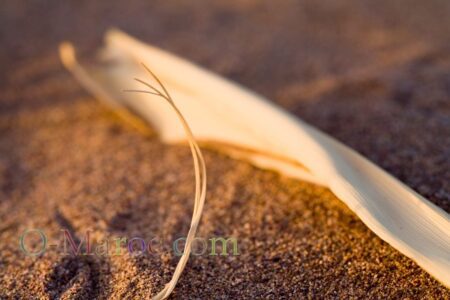The first time I saw Touhami Ennadre’s photos, I knew next to nothing about the Maghreb, which means it was really a long time ago. It was a blow, a visual and artistic shock.
I was already passionate about photography, he was speaking on a cultural programme on French television and I discovered one of his emblematic photos on the small screen, the one that appeared on the poster for his exhibition in Rabat:

I’d picked up the programme on the way through and hadn’t memorised the photographer’s name. I just remembered that he was Moroccan, but that he’d grown up in France.
And that he practised an art of black and white, of contrasting photos, of negative space that left me in awe.
This photo, taken at a funeral, is symbolic of his work. The day I got fed up and decided to ask Google, “photo main noir et blanc photographe marocain” was enough to find him.
Touhami Ennadre is more than a photographer, he’s an artist
I don’t want to reopen the great “is photography an art or a craft” debate here. As someone who loves photography, I believe that you can find both, that a photo can be pleasant, touching, beautiful and moving without being a work of art.
With Touhami Ennadre, the question doesn’t even arise: his way of transforming reality, as in this photo of the streets of Marrakech, his choice of what to show in a scene with his mastery of black and white, and the consistency of his work over time prove without context that he is an artist who uses photography as a medium.

He’s also a deeply Moroccan artist, in his modesty, his way of showing people and his choice of angle. You can show Morocco without colours, without oriental motifs and without a kasbah! Or Jemaa Fna Square, which you’ve probably never seen like this.
He is also an internationally acclaimed artist.
And, paradoxically, more recognised abroad than in Morocco. Whether in Asia, particularly Japan, or the United States, Touhami Ennadre is recognised as a great photographer. He ‘worked’ on the New York firefighters at the time of the WTC, since he was present.

He has also taken photographs in Japan that echo Eugene Smith’s famous photo of Minimata. “They echo” because there is no imitation, almost no resemblance in fact, apart from the position of a body and these shadows, the very shadows that Tanizaki magnified in his “In Praise of Shadows“.
Before exhibiting – at last – in Morocco, he had shown in major museums such as the Guggenheim and the MOMA in New York, the Maison Européenne de la Photographie in Paris, the Tate Galerie in Liverpool, the Villa Stuck in Munich, the Martin Gropius Museum in Berlin, at Documenta 11 in Kassel and at the Sharjah and Shanghai biennales.
Qasida noire (black), an unusual exhibition
The Qasida قصيدة is a very old form of Arabic poetry, whose name means “intention”, used to praise a tribe, a powerful person, etc. The poem, in its classical form, speaks of nostalgia, detachment, travel… Reciting the Qasida is also one of the rituals leading to trance in Isawiyya rituals.

Choosing this title for an exhibition summarising his work is therefore highly symbolic. A black Qasida is also praising shadows…
I’m very sorry I didn’t tell you about this exhibition earlier, which closes on Monday 30.
So if you’re in Rabat or have time to drop in, don’t hesitate! What’s more, on Friday and Saturday, from 4.30pm, Touhami Ennadre will be on hand to meet you!

In fact, the artist is also very active in promoting photography among young people, setting up in the medina, organising workshops and meetings. “Nothing” predestined this kid from the medina, who emigrated to France and grew up in a housing estate, to become this international artist. Because of this “nothing”, he wants to give others the chance to open up their horizons.
 A typo or syntax error? You can select the text and hit Ctrl+Enter to send us a message. Thank you! If this post interested you, maybe you can also leave a comment. We'd love to exchange with you !
A typo or syntax error? You can select the text and hit Ctrl+Enter to send us a message. Thank you! If this post interested you, maybe you can also leave a comment. We'd love to exchange with you !


